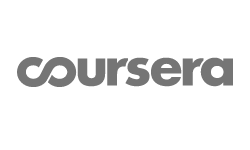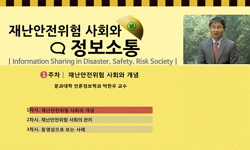Background: Sevoflurane, desflurane, and propofol are widely used in pediatric anesthesia because of their rapid recovery. However, emergence agitation is more reported with sevoflurane or desflurane than with propofol. Our clinical experience indi...
http://chineseinput.net/에서 pinyin(병음)방식으로 중국어를 변환할 수 있습니다.
변환된 중국어를 복사하여 사용하시면 됩니다.
- 中文 을 입력하시려면 zhongwen을 입력하시고 space를누르시면됩니다.
- 北京 을 입력하시려면 beijing을 입력하시고 space를 누르시면 됩니다.



소아에서 Bispectral Index 감시하에 Sevoflurane, Desflurane, Propofol을 이용한 전신마취 후 발생하는 각성시 흥분의 비교 = Comparison of emergence agitation between sevoflurane, desflurane, and propofol with bispectral index monitoring in pediatric anesthesi
한글로보기https://www.riss.kr/link?id=A104327696
- 저자
- 발행기관
- 학술지명
- 권호사항
-
발행연도
2008
-
작성언어
Korean
-
주제어
agitation ; bispectral index ; desflurane ; emergence ; sevoflurane ; propofol. ; agitation ; bispectral index ; desflurane ; emergence ; sevoflurane ; propofol.
-
등재정보
KCI등재,SCOPUS,SCIE
-
자료형태
학술저널
- 발행기관 URL
-
수록면
161-165(5쪽)
-
KCI 피인용횟수
1
- 제공처
-
0
상세조회 -
0
다운로드
부가정보
다국어 초록 (Multilingual Abstract)
Methods: Sixty children, ASA 1, aged 3−12 years, undergoing general anesthesia for adenotonsillectomy were randomized to receive maintenance anesthesia with sevoflurane, desflurane, or propofol. The bispectral index was monitored and maintained within 40−65. Time to extubation, duration of postanesthetic care units stay, bispectral index just before stopping the anesthetic agent, anesthetic time, early and late postoperative Pediatric Anesthesia Emergence Delirium Scale (PAEDS), and Children’s Hospital of Eastern Ontario Pain Scale (CHEOPS) were compared among the 3 groups. Data were analyzed using ANOVA (demographic data, measured time interval, BIS) and Kruskal-Wallis test (PAEDS and CHEOPS). The Spearman correlation coefficient was used to confirm the correlation between the two scales.
Results: Although desflurane resulted in the fastest extubation, other scales were not statistically different. PAEDS and CHEOPS for sevoflurane showed a positive correlation in the early recovery period, but desflurane and propofol did not.
Conclusions: With the same depth of anesthesia, emergence agitation among desflurane, sevoflurane, and propofol was not different in children.
Background: Sevoflurane, desflurane, and propofol are widely used in pediatric anesthesia because of their rapid recovery. However, emergence agitation is more reported with sevoflurane or desflurane than with propofol. Our clinical experience indicates emergence agitation with propofol is also frequent. We tested the hypothesis that depth of anesthesia could lead to frequent emergence agitation with propofol.
Methods: Sixty children, ASA 1, aged 3−12 years, undergoing general anesthesia for adenotonsillectomy were randomized to receive maintenance anesthesia with sevoflurane, desflurane, or propofol. The bispectral index was monitored and maintained within 40−65. Time to extubation, duration of postanesthetic care units stay, bispectral index just before stopping the anesthetic agent, anesthetic time, early and late postoperative Pediatric Anesthesia Emergence Delirium Scale (PAEDS), and Children’s Hospital of Eastern Ontario Pain Scale (CHEOPS) were compared among the 3 groups. Data were analyzed using ANOVA (demographic data, measured time interval, BIS) and Kruskal-Wallis test (PAEDS and CHEOPS). The Spearman correlation coefficient was used to confirm the correlation between the two scales.
Results: Although desflurane resulted in the fastest extubation, other scales were not statistically different. PAEDS and CHEOPS for sevoflurane showed a positive correlation in the early recovery period, but desflurane and propofol did not.
Conclusions: With the same depth of anesthesia, emergence agitation among desflurane, sevoflurane, and propofol was not different in children.
다국어 초록 (Multilingual Abstract)
Methods: Sixty children, ASA 1, aged 3−12 years, undergoing general anesthesia for adenotonsillectomy were randomized to receive maintenance anesthesia with sevoflurane, desflurane, or propofol. The bispectral index was monitored and maintained within 40−65. Time to extubation, duration of postanesthetic care units stay, bispectral index just before stopping the anesthetic agent, anesthetic time, early and late postoperative Pediatric Anesthesia Emergence Delirium Scale (PAEDS), and Children’s Hospital of Eastern Ontario Pain Scale (CHEOPS) were compared among the 3 groups. Data were analyzed using ANOVA (demographic data, measured time interval, BIS) and Kruskal-Wallis test (PAEDS and CHEOPS). The Spearman correlation coefficient was used to confirm the correlation between the two scales.
Results: Although desflurane resulted in the fastest extubation, other scales were not statistically different. PAEDS and CHEOPS for sevoflurane showed a positive correlation in the early recovery period, but desflurane and propofol did not.
Conclusions: With the same depth of anesthesia, emergence agitation among desflurane, sevoflurane, and propofol was not different in children.
Background: Sevoflurane, desflurane, and propofol are widely used in pediatric anesthesia because of their rapid recovery. However, emergence agitation is more reported with sevoflurane or desflurane than with propofol. Our clinical experience indi...
Background: Sevoflurane, desflurane, and propofol are widely used in pediatric anesthesia because of their rapid recovery. However, emergence agitation is more reported with sevoflurane or desflurane than with propofol. Our clinical experience indicates emergence agitation with propofol is also frequent. We tested the hypothesis that depth of anesthesia could lead to frequent emergence agitation with propofol.
Methods: Sixty children, ASA 1, aged 3−12 years, undergoing general anesthesia for adenotonsillectomy were randomized to receive maintenance anesthesia with sevoflurane, desflurane, or propofol. The bispectral index was monitored and maintained within 40−65. Time to extubation, duration of postanesthetic care units stay, bispectral index just before stopping the anesthetic agent, anesthetic time, early and late postoperative Pediatric Anesthesia Emergence Delirium Scale (PAEDS), and Children’s Hospital of Eastern Ontario Pain Scale (CHEOPS) were compared among the 3 groups. Data were analyzed using ANOVA (demographic data, measured time interval, BIS) and Kruskal-Wallis test (PAEDS and CHEOPS). The Spearman correlation coefficient was used to confirm the correlation between the two scales.
Results: Although desflurane resulted in the fastest extubation, other scales were not statistically different. PAEDS and CHEOPS for sevoflurane showed a positive correlation in the early recovery period, but desflurane and propofol did not.
Conclusions: With the same depth of anesthesia, emergence agitation among desflurane, sevoflurane, and propofol was not different in children.
참고문헌 (Reference)
1 Grundmann U, "Total intravenous anaesthesia with propofol and remifentanil in paediatric patients: a comparison with a desflurane-nitrous oxide inhalation anaesthesia" 42 : 845-850, 1998
2 Cravero JP, "The effect of small dose fentanyl on the emergence characteristics of pediatric patients after sevoflurane anesthesia without surgery" 97 : 364-367, 2003
3 McGrath PJ, "Schillinger J, Dunn J, Chapman J: CHEOPS: a behavioral scale for rating postoperative pain in children. In: Advances in Pain Research and Therapy 9" 395-402, 1985
4 Davis PJ, "Recovery characteristics of sevoflurane and halothane in preschool-aged children undergoing bilateral myringotomy and pressure equalization tube insertion" 88 : 34-38, 1999
5 Davis PJ, "Recovery characteristics of desflurane versus halothane for maintenance of anesthesia in pediatric ambulatory patients" 80 : 298-302, 1994
6 Cohen IT, "Rapid emergence does not explain agitation following sevoflurane anaesthesia in infants and children: a comparison with propofol" 13 : 63-67, 2003
7 Picard V, "Quality of recovery in children: sevoflurane versus propofol" 44 : 307-310, 2000
8 Nakayama S, "Propofol reduces the incidence of emergence agitation in preschool-aged children as well as in school-aged children: a comparison with sevoflurane" 21 : 19-23, 2007
9 Cohen IT, "Propofol or midazolam do not reduce the incidence of emergence agitation associated with desflurane anaesthesia in children undergoing adenotonsillectomy" 12 : 604-609, 2002
10 Dalens BJ, "Prevention of emergence agitation after sevoflurane anesthesia for pediatric cerebral magnetic resonance imaging by small doses of ketamine or nalbuphine administered just before discontinuing anesthesia" 102 : 1056-1061, 2006
1 Grundmann U, "Total intravenous anaesthesia with propofol and remifentanil in paediatric patients: a comparison with a desflurane-nitrous oxide inhalation anaesthesia" 42 : 845-850, 1998
2 Cravero JP, "The effect of small dose fentanyl on the emergence characteristics of pediatric patients after sevoflurane anesthesia without surgery" 97 : 364-367, 2003
3 McGrath PJ, "Schillinger J, Dunn J, Chapman J: CHEOPS: a behavioral scale for rating postoperative pain in children. In: Advances in Pain Research and Therapy 9" 395-402, 1985
4 Davis PJ, "Recovery characteristics of sevoflurane and halothane in preschool-aged children undergoing bilateral myringotomy and pressure equalization tube insertion" 88 : 34-38, 1999
5 Davis PJ, "Recovery characteristics of desflurane versus halothane for maintenance of anesthesia in pediatric ambulatory patients" 80 : 298-302, 1994
6 Cohen IT, "Rapid emergence does not explain agitation following sevoflurane anaesthesia in infants and children: a comparison with propofol" 13 : 63-67, 2003
7 Picard V, "Quality of recovery in children: sevoflurane versus propofol" 44 : 307-310, 2000
8 Nakayama S, "Propofol reduces the incidence of emergence agitation in preschool-aged children as well as in school-aged children: a comparison with sevoflurane" 21 : 19-23, 2007
9 Cohen IT, "Propofol or midazolam do not reduce the incidence of emergence agitation associated with desflurane anaesthesia in children undergoing adenotonsillectomy" 12 : 604-609, 2002
10 Dalens BJ, "Prevention of emergence agitation after sevoflurane anesthesia for pediatric cerebral magnetic resonance imaging by small doses of ketamine or nalbuphine administered just before discontinuing anesthesia" 102 : 1056-1061, 2006
11 Henneberg SW, "Peroperative depth of anaesthesia may influence postoperative opioid requirements" 49 : 293-296, 2005
12 Denman WT, "Pediatric evaluation of the bispectral index (BIS) monitor and correlation of BIS with end-tidal sevoflurane concentration in infants and children" 90 : 872-877, 2000
13 Murat I, "Is there a place for desflurane in paediatric anaesthesia?" 12 : 663-664, 2002
14 Lerman J, "Inhalational anesthetics" 14 : 380-389, 2004
15 Cole JW, "Emergence behaviour in children: defining the incidence of excitement and agitation following anaesthesia" 12 : 442-447, 2002
16 Uezono S, "Emergence agitation after sevoflurane versus propofol in pediatric patients" 91 : 563-566, 2000
17 Demirbilek S, "Effects of fentanyl on the incidence of emergence agitation in children receiving desflurane or sevoflurane anaesthesia" 21 : 538-542, 2004
18 Shukry M, "Does dexmedetomidine prevent emergence delirium in children after sevoflurane-based general anesthesia?" 15 : 1098-1104, 2005
19 Sikich N, "Development and psychometric evaluation of the pediatric anesthesia emergence delirium scale" 100 : 1138-1145, 2004
20 Welborn LG, "Comparison of emergence and recovery characteristics of sevoflurane, desflurane, and halothane in pediatric ambulatory patients" 83 : 917-920, 1996
21 Powers KS, "Bispectral index as a guide for titration of propofol during procedural sedation among children" 115 : 1666-1674, 2005
22 Sigl JC, "An introduction to bispectral analysis for the electroencephalogram" 10 : 392-404, 1994
23 Voepel-Lewis T, "A prospective cohort study of emergence agitation in the pediatric postanesthesia care unit" 96 : 1625-1630, 2003
동일학술지(권/호) 다른 논문
-
Duchenne 근육퇴행위축인 10세 환아의 마취 경험 —증례보고—
- 대한마취통증의학회
- 신현호
- 2008
- KCI등재,SCOPUS,SCIE
-
- 대한마취통증의학회
- 문성호
- 2008
- KCI등재,SCOPUS,SCIE
-
음악 청취가 의식소실에 필요한 Propofol 효과처 농도에 미치는 영향
- 대한마취통증의학회
- 홍상현
- 2008
- KCI등재,SCOPUS,SCIE
-
ALS 환자의 전신 마취시 근이완과 BIS 감시 —증례보고—
- 대한마취통증의학회
- 방문선
- 2008
- KCI등재,SCOPUS,SCIE
분석정보
인용정보 인용지수 설명보기
학술지 이력
| 연월일 | 이력구분 | 이력상세 | 등재구분 |
|---|---|---|---|
| 2023 | 평가예정 | 해외DB학술지평가 신청대상 (해외등재 학술지 평가) | |
| 2020-01-01 | 평가 | 등재학술지 유지 (해외등재 학술지 평가) |  |
| 2013-11-27 | 학회명변경 | 한글명 : 대한마취과학회 -> 대한마취통증의학회 |  |
| 2011-01-01 | 평가 | 등재학술지 유지 (등재유지) |  |
| 2010-07-20 | 학술지명변경 | 한글명 : 대한마취과학회지 -> Korean Journal of Anesthesiology |  |
| 2009-01-01 | 평가 | 등재학술지 유지 (등재유지) |  |
| 2007-01-01 | 평가 | 등재 1차 FAIL (등재유지) |  |
| 2004-01-01 | 평가 | 등재학술지 선정 (등재후보2차) |  |
| 2003-01-01 | 평가 | 등재후보 1차 PASS (등재후보1차) |  |
| 2001-07-01 | 평가 | 등재후보학술지 선정 (신규평가) |  |
학술지 인용정보
| 기준연도 | WOS-KCI 통합IF(2년) | KCIF(2년) | KCIF(3년) |
|---|---|---|---|
| 2016 | 0.09 | 0.09 | 0.1 |
| KCIF(4년) | KCIF(5년) | 중심성지수(3년) | 즉시성지수 |
| 0.09 | 0.09 | 0.27 | 0.01 |




 KCI
KCI




